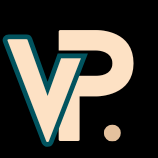"How I Built My First Portfolio Website"
Introduction:
Building my first portfolio website was a crucial milestone as a beginner web developer. It allowed me to showcase my skills, highlight my projects, and demonstrate my growth.
Why Build a Portfolio?
An online portfolio is key for building a personal brand, attracting clients, and practicing web development skills. It’s a place to showcase your projects and the technologies you’ve learned.
Tools and Technologies Used:
- HTML5 & CSS3: To structure and style my site.
- JavaScript: Added interactivity like smooth scrolling.
- GitHub: Hosted the site and tracked changes.
- VS Code: My code editor for the project.
Designing the Layout:
I aimed for a minimalistic and responsive design using Flexbox and media queries. I created wireframes in Figma to structure the design before coding.
Content Created:
- About Me: Introduced myself and shared my journey.
- Skills: Listed technologies I’ve worked with.
- Projects: Displayed projects with descriptions and links.
- Contact: Included a contact form and social links.
Adding JavaScript Functionality:
- Smooth Scrolling: For navigation.
- Form Validation: Ensured required fields were completed.
- Hover Effects: Made the site more interactive.
Testing and Debugging:
I tested the website across browsers and devices using Google Chrome DevTools, BrowserStack, and Lighthouse for performance checks. Debugging helped improve functionality.
Version Control & Deployment:
I used Git for version control and GitHub Pages to deploy my website, making it live and accessible.
Challenges Faced:
- Design Consistency: Solved with a simple CSS reset.
- Responsiveness: Adjusted media queries for different devices.
- JavaScript Debugging: Used Chrome DevTools to troubleshoot.
Conclusion:
Building my first portfolio was an educational experience that helped solidify my skills. It’s a valuable project for any beginner to practice and showcase their work. I encourage all new developers to create their own portfolio to gain hands-on experience.
